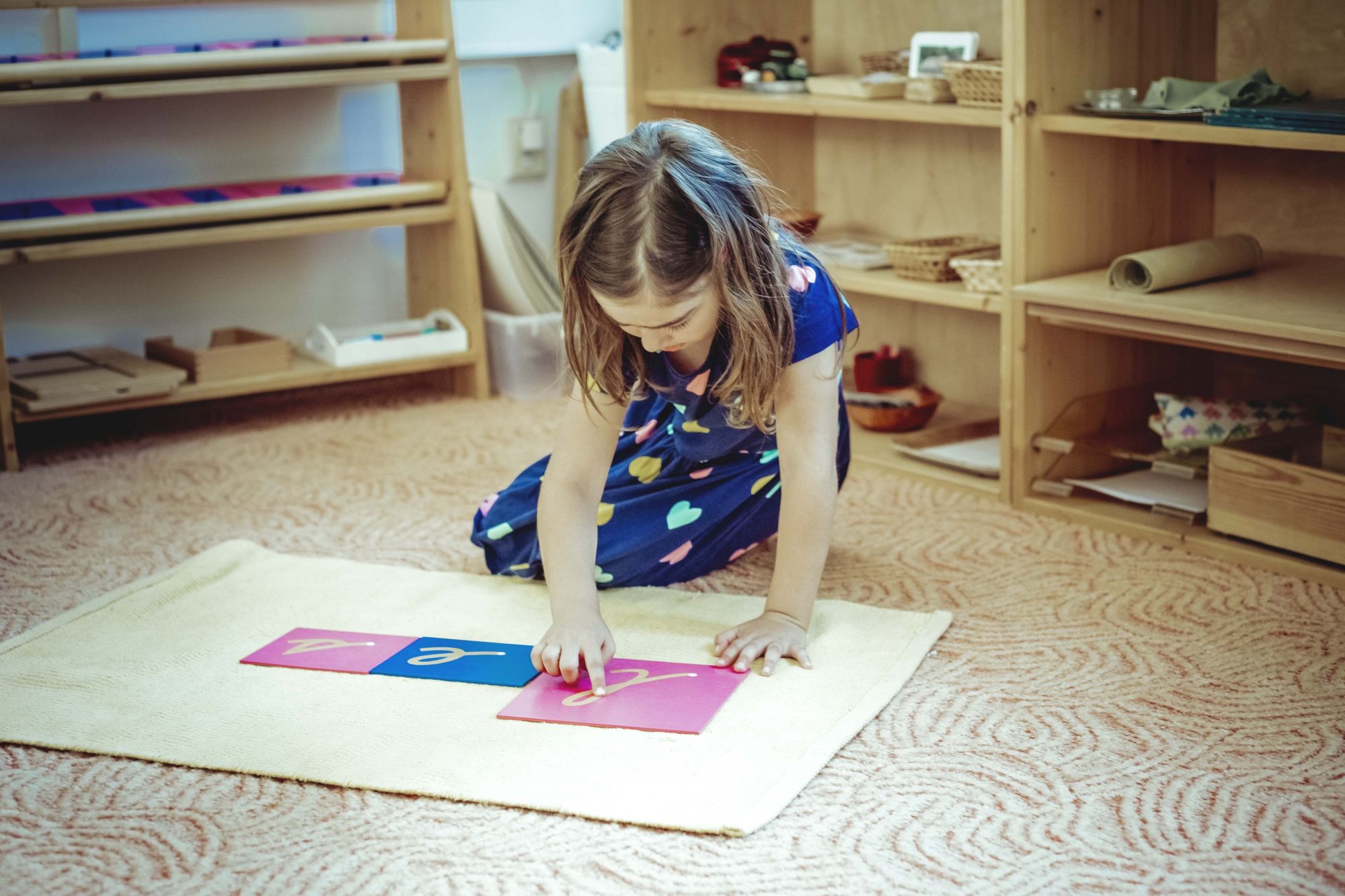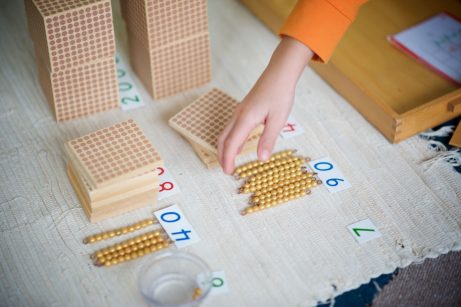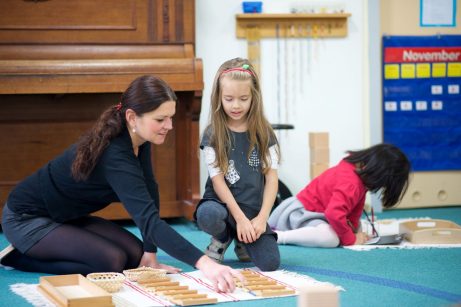The Three-Period Lesson

Chances are, if you’re learning about Montessori, you have heard about the three-period lesson. But can you really define what it refers to?
This is another one of those little terms that pops up ever so often in Montessori, and it has become shorthand among guides and practitioners. Although the phrase most often comes up in relation to vocabulary work, it does not refer to any particular lesson or material, but rather to the way we present lessons. With experience, it becomes an ingrained style of teaching for Montessori guides, something we do practically without conscious thought.
In essence, the three-period lesson refers to the three basic steps of offering new information. The beauty of its simplicity means that it is endlessly flexible and adaptable; it may even seem too obvious to even bother talking about. However, it is useful to give it a name and formalize the steps to ensure we won’t get ahead of ourselves in the teaching process – so that the child is provided with the best possible conditions to learn.

Explore the fundamentals of Montessori parenting with this free video by Sylvia Arotin, offering insights and strategies to empower and educate your child.
The three-period lesson is not necessarily exclusive to Montessori and can be applied with adults just as well as with children; good teachers use it all the time and chances are you have used it too, only without knowing it as such. Its periods are as follows:
- Introduction
The first step – identifying, naming and demonstrating whatever it is that the student is meant to learn. At this point it is important to make sure you are isolating the object of the lesson: to avoid confusing or burdening the student with too much at a time; to be clear, concise and exact. - Association and recognition
Of course, it is never enough to just give information and leave it alone; next we must practice, integrate and connect it to our existing knowledge. If we are doing a formal lesson with a student, we can ask them to identify, manipulate, or otherwise use the information they were just introduced to. Young children especially should be given opportunities to integrate information with sensory experience – through touching and handling concrete objects. - Recall and verification
Depending on the nature of the lesson and the age of the student, this last step might come immediately, or hours, days and weeks later. Its purpose is to make sure that the lesson was successful, that the student can understand and reproduce it by themselves, without assistance. If it involves the child directly demonstrating their knowledge to us, we must wait until we feel sure they can succeed! If, through a verification attempt, we find that the lesson didn’t “take”, we either go back to the first period and repeat the introduction, or offer the child more practice in the second period.
So what does this look like? Let’s consider three very different examples.
A guide presenting language objects to a toddler will show them the items one at a time, handing them over or laying them on the table, and name each: “Dog.” “Cat.” (she will definitely not say “Oh, this is a pussy cat, and here we have a fuzzy little dog, a terrier I believe”). That was introduction. For recognition and association, she might involve the child in a little game of sorts: “Dog, please? Can I have the dog? Now, hand me the cat, please”; she might even just ask the child to clean up the objects one at a time. Finally, for verification, she can ask: “What is this? What is the name of this?” But, with a young child, that direct question may not come for weeks or months later, as it can easily be too much pressure for a an emerging speaker. She will ask only after the child had already repeated that word after her, proving that they are able and willing to say it out loud.
Meanwhile, in a Casa classroom, a four-year old will be shown the sandpaper letters. During introduction, the guide, sitting next to the child, carefully traces the shape of the letter with a fingertip; her movements are deliberate, slow, and clear. When done, she names the letter, and moves onto the other letters (usually this is done with a group of three). The child is asked to repeat the actions after her and they finish for now. In recognition and association, the child will work independently, taking the letters, tracing and naming them; if the teacher sees this is not going well, she will repeat the introduction. Finally, on another day, the teacher will sit down with the child and ask, “what is this letter?” and the child will trace and name it, verifying they are done with this set and ready to work with the next one.
In Elementary, the same overall principles apply, even as the work gains complexity and the child’s nature changes. As usual, the first step will be a rather brief presentation, in which the teacher introduces a topic, shows the students the material – this time, for example, the sentence analysis set – and demonstrates its use. The second step may be carried out independently or in a group as the students use the material to analyse prepared text samples. Likely they will spend time debating and arguing among themselves about the correct results, or perhaps come to ask the teacher to clarify and help them work through a tricky sentence. The third step of the lesson will most often come without the teacher’s direct involvement, too – as she observes her students explaining the work to a classmate or correctly applying the concept in their writing, proving that they have fully grasped it are ready for the next step in the language curriculum.
The important part is that when we organize our teaching into three-period lessons, we look for completion – instead of at the calendar. There is no set, prescribed amount of time that a child should practice place value before they are introduced to multiple digit addition – or a set amount of time that they should spend on mathematics, period; they work for as long as they need, and our lessons are structured so that we as teachers can observe what each child needs through their work.
This approach is endlessly adaptable and I hope you can already think of multiple ways to apply it outside of the classroom, too – whether as parents working with your children, among colleagues at work, or friends learning the ins and outs of a hobby from each other.
Montessori Beginnings
YOUR ULTIMATE
MONTESSORI PARENTING COURSE
FOR ZERO TO THREE
Gain clarity and confidence in your parenting to raise a resilient, independent and joyful child.


